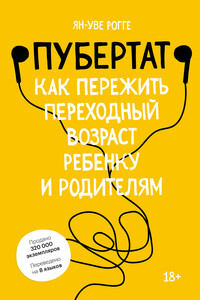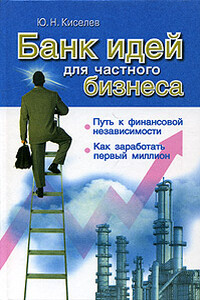Токсичные коллеги. Как работать с невыносимыми людьми (примечания)
1
Lindsay Kolowich Cox, “Eleven reasons having friends at work makes you happier”, Hubspot, February 1, 2017, https://blog.hubspot.com/marketing/workplace-friendships.
2
Cynthia Kay Stevens and Amy L. Kristof, “Making the right impression: A field study of applicant impression management during job interviews”, Journal of Applied Psychology 80, no. 5 (1995), https://doi.org/10.1037/0021-9010.80.5.587.
3
Siyu Yu, Gavin J. Kilduff and Tessa V. West, “Status Acuity: How the Ability to Accurately Perceive Status Hierarchies Reduces Status Conflict and Benefits Team Performance” (Unpublished manuscript, 2021).
4
Mercer – международная консалтинговая HR-компания, штаб-квартира которой расположена в Нью-Йорке. Здесь и далее прим. пер.
5
Mercer, “Connectivity in the human age: Global Talent Trends 2019”, www.mercer.com/our-thinking/career/global-talent-hr-trends-infographics.html.
6
Felicia Pratto et al., “Social dominance orientation: A personality variable predicting social and political attitudes”, Journal of Personality and Social Psychology 67, no. 4 (1994), https://doi.org/10.1037/0022-3514.67.4.741.
7
Sanne Feenstra et al., “The Hazard of Teetering at the Top and Being Tied to the Bottom: The Interactive Relationship of Power, Stability, and Social Dominance Orientation with Work Stress”, Applied Psychology 66, no. 4 (2017), https://doi.org/10.1111/apps.12104.
8
Katherine R. Thorson, Oana D. Dumitru and Tessa V. West, “Physiological linkage among successful high-status women in international teams”, Social Cognitive and Affective Neuroscience 16, nos. 1–2 (2021), https://doi.org/10.1093/scan/nsaa112.
9
И не только в педагогике: эффект Матфея – феномен неравномерного распределения преимуществ, в котором сторона, уже ими обладающая, продолжает их накапливать и приумножать, в то время как другая, изначально ограниченная, оказывается обделена еще сильнее и, следовательно, имеет меньшие шансы на дальнейший успех. Термин взят из притчи о талантах в Евангелии от Матфея: «…ибо всякому имеющему дастся и приумножится, а у неимеющего отнимется и то, что имеет» (Мф. 25:29).
10
Tessa V. West et al., “A little similarity goes a long way: The effects of peripheral but self-revealing similarities on improving and sustaining interracial relationships”, Journal of Personality and Social Psychology 107, no. 1 (2014), https://doi.org/10.1037/a0036556.
11
NFL, “NFL Junior Rotation Program Overview”, www.nfl.com/careers/jrp.
12
Daniel C. Feldman, “Toxic Mentors or Toxic Proteges? A Critical Re-Examination of Dysfunctional Mentoring”, Human Resource Management Review 9, no. 3 (September 1999), https://doi.org/10.1016/S1053-4822(99)00021-2.
13
Sarah P. Doyle et al., “Helping Others Most When They Are Not Too Close: Status Distance as a Determinant of Interpersonal Helping in Organizations”, Academy of Management Discoveries 2, no. 2 (2016), https://doi.org/10.5465/amd.2014.0104.
14
Tessa V. West, Adam R. Pearson and Chadly Stern, “Anxiety perseverance in intergroup interaction: When incidental explanations backfire”, Journal of Personality and Social Psychology 107, no. 5 (2014), https://doi.org/10.1037/a0037941.
15
На рынке недвижимости брокеры помогают в организации сделок по купле-продаже, аренде и работают преимущественно с объектами коммерческой недвижимости. Брокер не является экспертом рынка недвижимости, его задача – выступить посредником между двумя сторонами сделки и оформить все необходимые документы. Прим. ред.
16
Лига плюща (англ. The Ivy League) – ассоциация восьми частных американских университетов, которые постоянно входят в 15 лучших колледжей и университетов США. Название происходит от побегов плюща, обвивающих старые здания в этих университетах. Прим. ред.
17
В торговле недвижимостью листинг – письменное соглашение между владельцем и брокером, предоставляющее брокеру право искать покупателя или арендатора.
18
Leigh Thompson and George Loewenstein, “Egocentric interpretations of fairness and interpersonal conflict”, Organizational Behavior and Human Decision Processes 51, no. 2 (March 1992), https://doi.org/10.1016/0749-5978(92)90010-5.
19
Chrome River, “Chrome River survey reveals insights on business travel expense fraud, how businesses can deter it”, May 31, 2018, www.chromeriver.com/news/chrome-river-survey-reveals-insights-on-business-travel-expense-fraud.
20
Lou Solomon, “The Top Complaints from Employees About Their Leaders”, Harvard Business Review, June 24, 2015, https://hbr.org/2015/06/the-top-complaints-from-employees-about-their-leaders.
21
Randy Thornhill, “Adaptive Female-Mimicking Behavior in a Scorpionfly”, Science 205, no. 4404 (1979), https://doi.org/10.1126/science.205.4404.412.
22
Daniel H. Stein et al., “The Mistaken Preference for Overclaiming Credit in Groups” (Unpublished manuscript, January 6, 2020).
23
Taeya M. Howell et al., “Who gets credit for input? Demographic and structural status cues in voice recognition”, Journal of Applied Psychology 100, no. 6 (2015), https://doi.org/10.1037/apl0000025.
24
Raymond T. Sparrowe et al., “Social networks and the performance of individuals and groups”, Academy of Management Journal 44, no. 2 (2001), https://doi.org/10.2307/3069458.
25
Steven R. Corman and Craig R. Scott, “Perceived Networks, Activity Foci, and Observable Communication in Social Collectives”, Communication Theory 4, no. 3 (2006), https://doi.org/10.1111/j.1468–2885.1994.tb00089.x; Miller McPherson, Lynn Smith-Lovin and James M. Cook, “Birds of a Feather: Homophily in Social Networks”, Annual Review of Sociology 27, no. 1 (2001), https://doi.org/10.1146/annurev.soc.27.1.415.
26
Mark C. Bolino and Adam M. Grant, “The Bright Side of Being Prosocial at Work, and the Dark Side, Too: A Review and Agenda for Research on Other-Oriented Motives, Behavior, and Impact in Organizations”, Academy of Management Annals 10, no. 1 (2016), https://doi.org/10.5465/19416520.2016.1153260.
27
Elizabeth J. McClean et al., “The Social Consequences of Voice: An Examination of Voice Type and Gender on Status and Subsequent Leader Emergence”, Academy of Management Journal 61, no. 5 (2018), https://doi.org/10.5465/amj.2016.0148.
28
Samuel R. Sommers, “On racial diversity and group decision making: Identifying multiple effects of racial composition on jury deliberations”, Journal of Personality and Social Psychology 90, no. 4 (2006), https://doi.org/10.1037/0022-3514.90.4.597.
29
Thomas Gilovich, Justin Kruger and Victoria Husted Medvec, “The Spotlight Effect Revisited: Overestimating the Manifest Variability of Our Actions and Appearance”, Journal of Experimental Social Psychology 38, no. 1 (January 2002), https://doi.org/10.1006/jesp.2001.1490.
30
Emily Pronin et al., “Everyday magical powers: The role of apparent mental causation in the overestimation of personal influence”, Journal of Personality and Social Psychology 91, no. 2 (2006), https://doi.org/10.1037/0022-3514.91.2.218.
31
Seale Harris, “Banting’s Miracle: The Story of the Discovery of Insulin” (Philadelphia: Lippincott, 1946).
32
Louis Rosenfeld, “Insulin: Discovery and Controversy”, Clinical Chemistry 48, no. 12 (2002), https://doi.org/10.1093/clinchem/48.12.2270.
33
Nicholas Wade, “Nobel Follies”, Science 211, no. 4489 (1981), https://doi.org/10.1126/science.211.4489.1404.
34
Cameron Anderson and Robb Willer, “Do Status Hierarchies Benefit Groups? A Bounded Functionalist Account of Status”, in The Psychology of Social Status, ed. Joey T. Cheng, Jessica L. Tracy and Cameron Anderson (New York: Springer, 2014).
35
Марти Немко – известный американский коуч, сформулировавший свод из 24 лайфхаков «для улучшения жизни».
36
Mark Goulston, “How to know if you talk too much”, Harvard Business Review, June 3, 2015, https://hbr.org/2015/06/how-to-know-if-you-talk-too-much.
37
Katherine R. Thorson, Oana D. Dumitru and Tessa V. West, “Physiological linkage among successful high-status women in international teams”, Social Cognitive and Affective Neuroscience 16, nos. 1–2 (2021), https://doi.org/10.1093/scan/nsaa112.
38
Dana R. Carney, “The nonverbal expression of power, status, and dominance”, Current Opinion in Psychology 33 (June 2020), https://doi.org/10.1016/j.copsyc.2019.12.004.
39
Matthew Feinberg, Robb Willer and Michael Schultz, “Gossip and Ostracism Promote Cooperation in Groups”, Psychological Science 25, no. 3 (2014), https://doi.org/10.1177/0956797613510184.
40
David A. Kravitz and Barbara Martin, “Ringelmann rediscovered: The original article”, Journal of Personality and Social Psychology 50, no. 5 (1986), https://doi.org/10.1037/0022-3514.50.5.936.
41
Результаты эксперимента были опубликованы в 1913 году. Максимилиана Рингельмана называют отцом социальной психологии.
42
Ian J. Deary et al., “More Intelligent, More Dependable Children Live Longer: A 55-Year Longitudinal Study of a Representative Sample of the Scottish Nation”, Psychological Science 19, no. 9 (2008), https://doi.org/10.1111/j.1467–9280.2008.02171.x.
43
Avan Jassawalla, Hemant Sashittal and Avinash Sashittal, “Students’ Perceptions of Social Loafing: Its Antecedents and Consequences in Undergraduate Business Classroom Teams”, Academy of Management Learning & Education 8, no. 1 (2009), https://doi.org/10.5465/amle.2009.37012178.
44
Michaéla C. Schippers, “Social Loafing Tendencies and Team Performance: The Compensating Effect of Agreeableness and Conscientiousness”, Academy of Management Learning & Education 13, no. 1 (2014), https://doi.org/10.5465/amle.2012.0191.
45
Robert C. Liden et al., “Social Loafing: A Field Investigation”, Journal of Management 30, no. 2 (2004), https://doi.org/10.1016/j.jm.2003.02.002.
46
Michael J. Rosenfeld, Reuben J.Thomas and Sonia Hausen, “Disintermediating your friends: How online dating in the United States displaces other ways of meeting”, Proceedings of the National Academy of Sciences 116, no. 36 (2019), https://doi.org/10.1073/pnas.1908630116.
47
Chris Lam, “The Role of Communication and Cohesion in Reducing Social Loafing in Group Projects”, Business and Professional Communication Quarterly 78, no. 4 (2015), https://doi.org/10.1177/2329490615596417.
48
Vasyl Taras et al., “Straight from the horse’s mouth: Justifications and prevention strategies provided by free riders on global virtual teams”, Journal of Management and Training for Industries 5, no. 3 (2018), https://search.informit.org/doi/10.3316/informit.170441492915342.
49
Anthony J. Nyberg et al., “Collective Pay for Performance: A Cross-Disciplinary Review and Meta-Analysis”, Journal of Management 44, no. 6 (April 2018), https://doi.org/10.1177/0149206318770732.
50
«Повелитель мух» (англ. Lord of the Flies) – аллегорический роман английского писателя, лауреата Нобелевской премии по литературе (1983) Уильяма Голдинга, вышедший в 1954 году. Прим. ред.
51
Matt Bolch, “Rewarding the Team: It requires careful consideration to craft a compensation plan that encourages and rewards employees for effective teamwork”, HR Magazine 52, no. 2 (February 2007).
52
Kipling Williams, Stephen G. Harkins and Bibb Latané, “Identifiability as a deterrant to social loafing: Two cheering experiments”, Journal of Personality and Social Psychology 40, no. 2 (1981), https://doi.org/10.1037/0022-3514.40.2.303.
53
Jennifer M. George, “Extrinsic and Intrinsic Origins of Perceived Social Loafing in Organizations”, Academy of Management Journal 35, no. 1 (1992), https://doi.org/10.5465/256478.
54
Steve W. J. Kozlowski and Daniel R. Ilgen, “Enhancing the Effectiveness of Work Groups and Teams”, Psychological Science in the Public Interest 7, no. 3 (2006), https://doi.org/10.1111/j.1529–1006.2006.00030.x.
55
Mary-Ann Russon, “How to get paid for doing nothing: Inside Silicon Valley’s controversial ‘rest and vest’ culture”, International Business Times August 7, 2017, www.ibtimes.co.uk/how-get-paid-doing-nothing-inside-silicon-valleys-controversial-rest-vest-culture-1633884.
56
Robert B. Lount, Jr. et al., “Only When Others Are Watching: The Contingent Efforts of High Status Group Members”, Management Science 65, no. 7 (2019), https://doi.org/10.1287/mnsc.2018.3103.
57
Kenneth H. Price, David A. Harrison and Joanne H. Gavin, “Withholding inputs in team contexts: Member composition, interaction processes, evaluation structure, and social loafing”, Journal of Applied Psychology 91, no. 6 (2006), https://doi.org/10.1037/0021-9010.91.6.1375.
58
Christy Zhou Koval et al., “The burden of responsibility: Interpersonal costs of high self-control”, Journal of Personality and Social Psychology 108, no. 5 (2015), https://doi.org/10.1037/pspi0000015.
59
David Gill et al., “First-Place Loving and LastPlace Loathing: How Rank in the Distribution of Performance Affects Effort Provision”, Management Science 65, no. 2 (2019), https://doi.org/10.1287/mnsc.2017.2907.
60
Allen J. Neuringer, “Animals Respond for Food in the Presence of Free Food”, Science 166, no. 3903 (1969), https://doi.org/10.1126/science.166.3903.399.
61
Robert D. Tarte, “Contrafreeloading in Humans”, Psychological Reports 49, no. 3 (1981), https://doi.org/10.2466/pr0.1981.49.3.859.
62
N. T. Feather, “Protestant Ethic, conservatism, and values”, Journal of Personality and Social Psychology 46, no. 5 (1984), https://doi.org/10.1037/0022-3514.46.5.1132.
63
Обмен язвительными и остроумными шутками между жителями Канады и США уже стал чуть ли не традицией в повседневной жизни и нашел отражение в массовой культуре. Прим. ред.
64
Harry E. Chambers, My Way or the Highway: Micromanagement Survival Guide (San Francisco: Berrett-Koehler Publishers, 2004).
65
David Sturt and Todd Nordstrom, “10 shocking workplace stats you need to know”, Forbes, March 8, 2018, www.forbes.com/sites/davidsturt/2018/03/08/10-shocking-workplace-stats-you-need-to-know/?sh=42e412c2f3af.
66
Richard D. White, “The Micromanagement Disease: Symptoms, Diagnosis, and Cure”, Public Personnel Management 39, no. 1 (2010), https://doi.org/10.1177/009102601003900105.
67
Iskandar Aminov, Aaron De Smet, Gregor Jost and David Mendelsohn, “Decision making in the age of urgency”, McKinsey & Company, survey, April 30, 2019, www.mckinsey.com/business-functions/organization/our-insights/decision-making-in-the-age-of-urgency.
68
Jeffrey Pfeffer et al., “Faith in Supervision and the Self-Enhancement Bias: Two Psychological Reasons Why Managers Don’t Empower Workers”, Basic and Applied Social Psychology 20, no. 4 (December 1, 1998), https://doi.org/10.1207/s15324834basp2004_8.
69
White, “The Micromanagement Disease”.
70
Mike Ramsey, “Electric-car pioneer Elon Musk charges head-on in Detroit”, The Wall Street Journal, January 11, 2015, www.wsj.com/articles/electric-car-pioneer-elon-musk-charges-head-on-at-detroit-1421033527.
71
Aminov, De Smet, Jost and Mendelsohn, “Decision making”.
72
Matt Villano, “The control freak in the corner office”, The New York Times, May 28, 2006, www.nytimes.com/2006/05/28/business/yourmoney/28advi.html; Ben Wigert and Ryan Pendell, “The ultimate guide to micromanagers: Signs, causes, solutions”, Gallup, July 17, 2020, www.gallup.com/workplace/315530/ultimate-guide-micromanagers-signs-causes-solutions.aspx.
73
Menelaos Apostolou and Yan Wang, “The Challenges of Keeping an Intimate Relationship: An Evolutionary Examination”, Evolutionary Psychology 18, no. 3 (2020), https://doi.org/10.1177/1474704920953526.
74
Джон Готтман – профессор психологии в Вашингтонском университете, известный во всем мире психолог, завоевавший признание работами о стабильности в браке и вероятности разводов. Входит в список «Десять самых влиятельных терапевтов», составленный Psychotherapy Networker. Автор 190 опубликованных научных статей, а также автор и соавтор сорока книг. Прим. ред.
75
John M. Gottman, “Repair and the core triad of balance”, in The Marriage Clinic: A Scientifically-Based Marital Therapy (New York: W. W. Norton & Company, 1999).
76
John M. Gottman, The Seven Principles for Making Marriage Work (New York: Crown, 1999).
77
Kathleen A. Eldridge et al., “Demand-withdraw communication in severely distressed, moderately distressed, and nondistressed couples: Rigidity and polarity during relationship and personal problem discussions”, Journal of Family Psychology 21, no. 2 (2007), https://doi.org/10.1037/0893-3200.21.2.218.
78
Annamarie Mann, “What are the best employee perks? Four questions to ask first”, Gallup, August 2017, www.gallup.com/workplace/236141/best-employee-perks-questions-ask-first.aspx.
79
Brigid Schulte, “Millennials want a work life balance. Their bosses just don’t get why”, The Washington Post, May 5, 2015, www.washingtonpost.com/local/millennials-want-a-work-life-balance-their-bosses-just-dont-get-why/2015/05/05/1859369e-f376-11e4-84a6-6d7c67c50db0_story.html.
80
Shauna W., “David Lee Roth explains Van Halen’s no brown M&Ms rule”, Ultimate Classic Rock, 2012, https://ultimateclassicrock.com/david-lee-roth-van-halen-brown-mms-rule.
81
Eleni Zoe, “Satisfaction with Onboarding: What New Hires Want”, TalentLMS, August 22, 2019, www.talentlms.com/blog/new-employee-onboarding-study.
82
C. Lampic et al., “Short– and long-term anxiety and depression in women recalled after breast cancer screening”, European Journal of Cancer 37, no. 4 (March 2001), https://doi.org/10.1016/S0959-8049(00)00426-3; Patricia Pineault, “Breast Cancer Screening: Women’s Experiences of Waiting for Further Testing”, Oncology Nursing Forum 34, no. 4 (July 2007).
83
Kate Sweeny et al., “Two definitions of waiting well”, Emotion 16, no. 1 (2016), https://doi.org/10.1037/emo0000117.
84
Kristy Threlkeld, “Employee Burnout Report: COVID-19’s Impact and 3 Strategies to Curb It”, Indeed, March 11, 2021, www.indeed.com/lead/preventing-employee-burnout-report.
85
Gallup, “The Manager Experience Series: Top Challenges & Perks of Managers”, www.gallup.com/workplace/259820/manager-experience-challenges-perk-perspective-paper.aspx?g_source=link_wwwv9&g_campaign=item_259466&g_medium=copy
86
Alyssa Place, “How managers can protect themselves from burnout”, Employee Benefit News, March 11, 2021, www.benefitnews.com/news/how-managers-can-protect-themselves-from-burnout.
87
Randall Beck and James Harter, “Why good managers are so rare”, Harvard Business Review, March 13, 2014, https://hbr.org/2014/03/why-good-managers-are-so-rare?utm_source=link_wwwv9&utm_campaign=item_231593&utm_medium=copy.
88
Julian Birkinshaw and Simon Caulkin, “How Should Managers Spend Their Time? Finding More Time for Real Management” Business Strategy Review 23, no. 4 (2012), https://doi.org/10.1111/j.1467–8616.2012.00901.x.
89
Sharyn E. Herzig and Nerina L. Jimmieson, “Middle managers’ uncertainty management during organizational change”, Leadership & Organization Development Journal 27, no. 8 (2006), https://doi.org/10.1108/01437730610709264.
90
Michael E. Porter and Nitin Nohria, “How CEOs manage time”, Harvard Business Review, July – August 2018, https://hbr.org/2018/07/the-leaders-calendar#:~:text=The%20leaders%20in%20our%20study,days%2C%20averaging%202.4%20hours%20daily.
91
Annabel Fenwick Elliott, “Are you a first date fibber? Two thirds of us admit to doing it… with men lying most about their wealth and women shaving four years off their age”, Daily Mail, April 8, 2015, www.dailymail.co.uk/femail/article-3030591/Two-thirds-admit-lying-date.html.
92
HireRight, “Liar, liar! The pants and the rest of you are fired”, August 10, 2020, www.hireright.com/blog/tag/lied-on-resume.
93
Philip F. Stahel et al., “The 5th anniversary of the ‘Universal Protocol’: Pitfalls and pearls revisited”, Patient Safety in Surgery 3, no. 1 (July 2009), https://doi.org/10.1186/1754-9493-3-14.
94
Balraj S. Jhawar, Demytra Mitsis and Neil Duggal, “Wrong-sided and wrong-level neurosurgery: A national survey”, Journal of Neurosurgery: Spine SPI 7, no. 5 (November 2007), https://doi.org/10.3171/spi-07/11/467.
95
Ken Blanchard Companies – консалтинговая компания, основанная Кеном Бланшаром, экспертом по менеджменту, автором многих бестселлеров. Его книга The One Minute Manager, первая бизнес-притча, ставшая широко известной, была продана в количестве более 13 миллионов копий и переведена на 37 языков. Прим. ред.
96
David Witt, “2020 Leadership development trends, challenges, and opportunities”, Ken Blanchard Companies, January 2, 2020, https://resources.kenblanchard.com/blanchard-leaderchat/2020-leadership-development-trends-challenges-and-opportunities.
97
Джулиан Биркиншоу – доцент кафедры стратегического и международного менеджмента London Business School и сотрудник Advanced Institute of Management Research. Журнал Management Today назвал Биркиншоу одним из шести гуру управления следующего поколения. Саймон Колкин – известный английский бизнес-журналист, колумнист газеты The Guardian. Прим. ред.
98
В 1944 году режиссер Джордж Кьюкор поставил по этой пьесе одноименный фильм с Ингрид Бергман в главной роли.
99
Кузнечиковые, или скорпионовые, хомячки обитают на территории от Южной Канады до Северной Мексики.
100
Ashlee H. Rowe et al., “Voltage-Gated Sodium Channel in Grasshopper Mice Defends Against Bark Scorpion Toxin”, Science 342, no. 6157 (2013), https://doi.org/10.1126/science.1236451.
101
Bella M. DePaulo et al., “Cues to deception”, Psychological Bulletin 129, no. 1 (2003), https://doi.org/10.1037/0033-2909.129.1.74.
102
Maria Hartwig and Charles F. Bond, Jr., “Why do lie-catchers fail? A lens model meta-analysis of human lie judgments”, Psychological Bulletin 137, no. 4 (2011), https://doi.org/10.1037/a0023589.
103
Michael G. Aamodt and Heather Custer, “Who Can Best Catch a Liar?”, Forensic Examiner 15, no. 1 (Spring 2006); Charles F. Bond and Bella M. DePaulo, “Accuracy of Deception Judgments”, Personality and Social Psychology Review 10, no. 3 (2006), https://doi.org/10.1207/s15327957pspr1003_2.
104
David F. Larcker and Anastasia A. Zakolyukina, “Detecting Deceptive Discussions in Conference Calls”, Jerks_9780593192306_all_6p_r2.indd 254 11/12/21 12:51 AM Jerks_9780593192306_all_6p_r2.indd Journal of Accounting Research 50, no. 2 (February 2012), https://doi.org/10.1111/j.1475-679X.2012.00450.x.
105
Hee Sun Park et al., “How people really detect lies,” Communication Monographs 69, no. 2 (June 2002), https://doi.org/10.1080/714041710.
106
Bertjan Doosje et al., “Terrorism, radicalization and deradicalization”, Current Opinion in Psychology 11 (October 2016), https://doi.org/10.1016/j.copsyc.2016.06.008.
107
Vera E. Mouradian, “Abuse in intimate relationships: Defining the multiple dimensions and terms”, National Violence Against Women Research Center, 2000, https://mainweb-v.musc.edu/vawprevention/research/defining.shtml.
108
David T. Welsh et al., “The slippery slope: How small ethical transgressions pave the way for larger future transgressions”, Journal of Applied Psychology 100, no. 1 (2015), https://doi.org/10.1037/a0036950.
109
Стэнли Милгрэм (1933–1984) – американский социальный психолог и педагог, известный своими экспериментами в области подчинения авторитету и связности социальных сетей («Теория шести рукопожатий»). Входит в число наиболее влиятельных психологов XX века.
110
Todd C. Buckley, Edward B. Blanchard and W. Trammell Neill, “Information processing and PTSD: A review of the empirical literature”, Clinical Psychology Review 20, no. 8 (November 2000), https://doi.org/10.1016/S0272-7358(99)00030-6; Kate Clauss and Caroline Clements, “Threat Bias and Emotion Recognition in Victims of IPV”, Journal of Interpersonal Violence 36, nos. 5–6 (March 2018), https://doi.org/10.1177/0886260518766424.
111
Elizabeth Levy Paluck, Hana Shepherd and Peter M. Aronow, “Changing climates of conflict: A social network experiment in 56 schools”, Proceedings of the National Academy of Sciences113, no. 3 (January 2016), https://doi.org/10.1073/pnas.1514483113.
112
Дивали – главный индийский и индуистский праздник, отмечается как Фестиваль огней и символизирует победу добра над злом.







